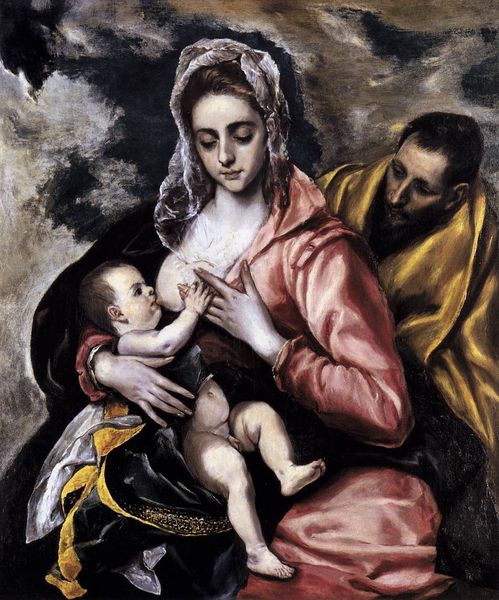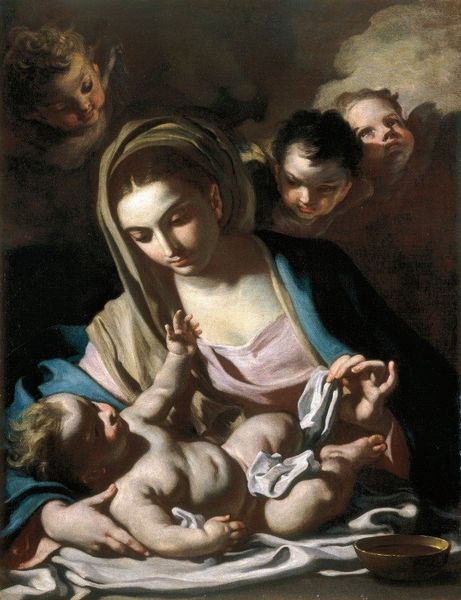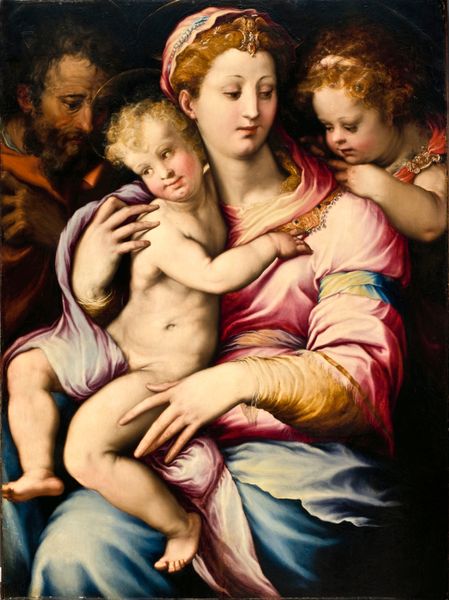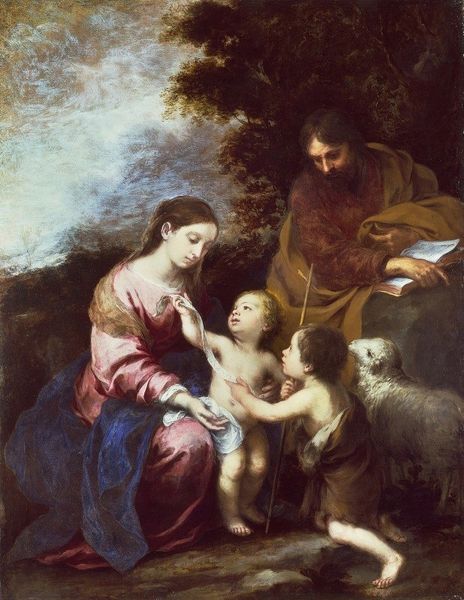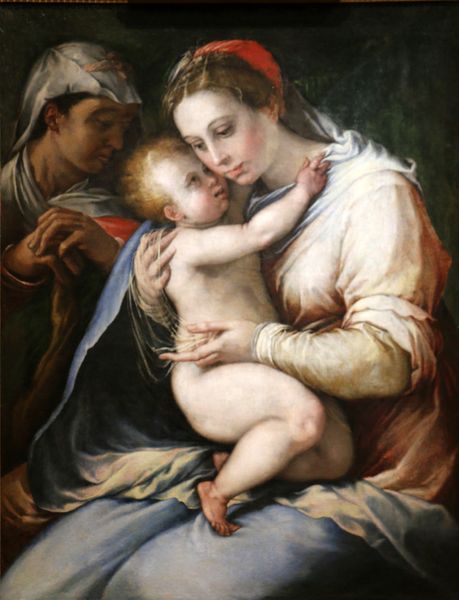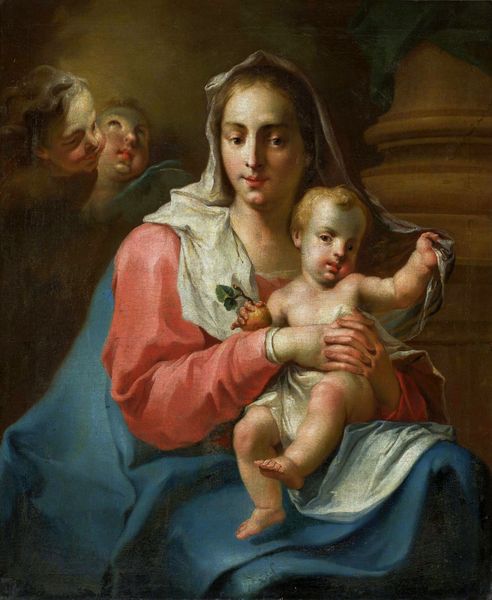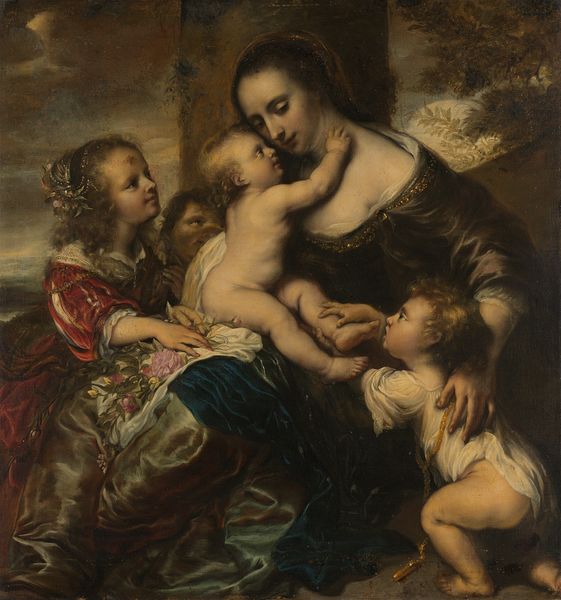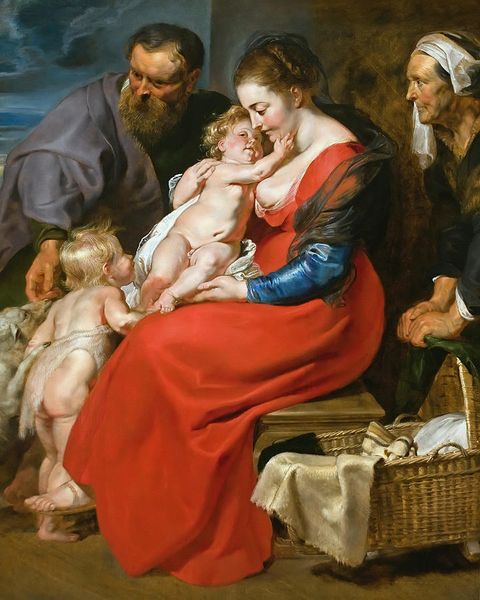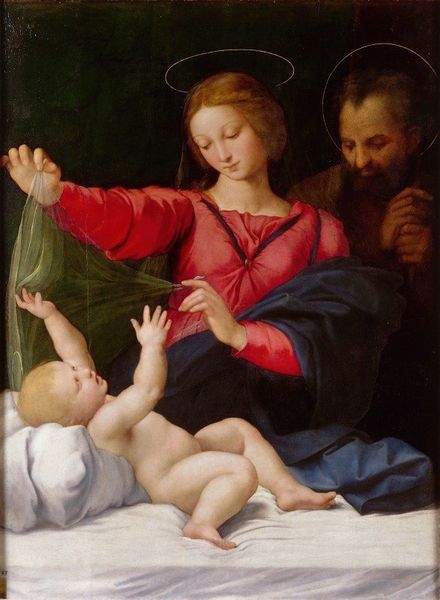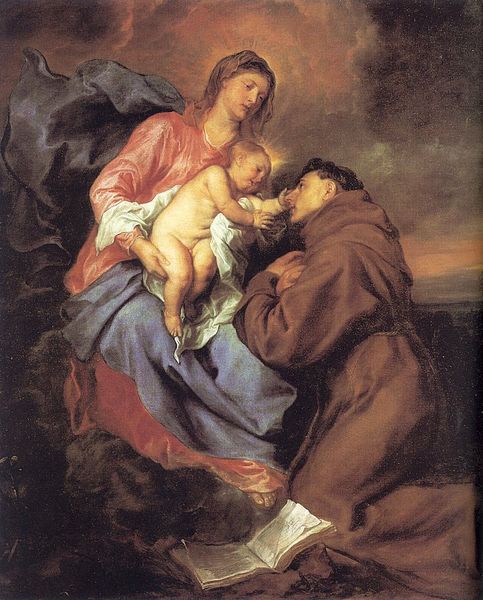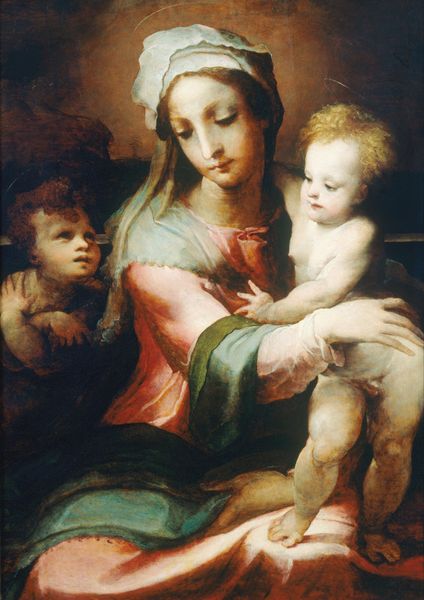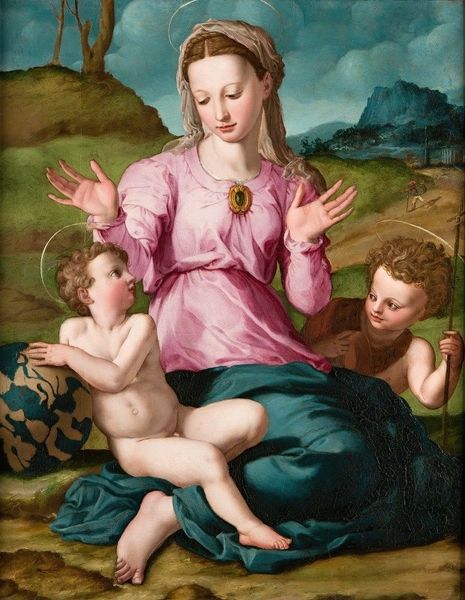
Copyright: Public Domain: Artvee
Editor: This is Raimundo de Madrazo's "Holy Family," painted in 1908 using oil paints. There's a rawness to it, but it still seems idealized. How do you interpret this work, considering its title? Curator: The "Holy Family," a loaded symbol. Think about the sheer weight of that concept through centuries of art and culture. Then consider what Madrazo, working in 1908, chooses to show. It is not a conventional take. Editor: So it's subverting expectations? How so? Curator: Consider the act of breastfeeding. How often do we see it so explicitly represented in earlier portrayals of the Madonna and Child? The breast itself carries such strong symbolism: nurturing, femininity, even a sense of the earth mother. What emotions are evoked by Madrazo showing this vulnerable act, versus a more regal, distant Mary? Editor: It feels much more human. There's almost a documentarian quality to it, compared to, say, Renaissance paintings of the same subject. But what about Joseph? He's looming in the background. Curator: Ah, yes. Shadow or protector? Observe his gaze, that of witness and of guardian. This painting engages our collective memories about the religious symbol of "the Holy Family," then subtly revises the familiar narrative and invites contemplation on motherhood and humanity. What has this work taught us about Madrazo and historical images? Editor: It is compelling how an artist plays with deeply rooted cultural concepts. Seeing it like this, "Holy Family" tells a whole story using symbols. It shifts everything. Thank you for your interpretation! Curator: Indeed. I am also more attentive now of the multiple readings any artwork permits!
Comments
No comments
Be the first to comment and join the conversation on the ultimate creative platform.
